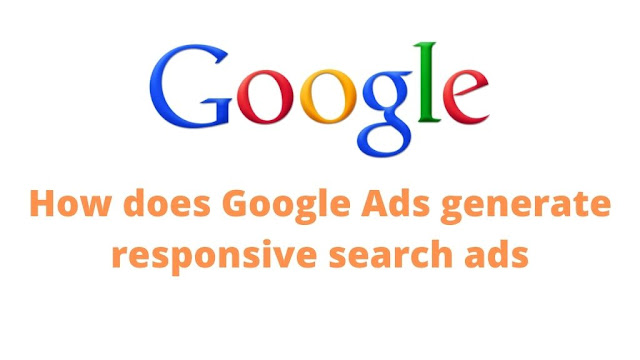How does Google Ads generate responsive search ads
How does Google Ads generate responsive search ads. Responsive search ads provide a more relevant and engaging experience for your customers. Learn more about advertising with responsive search ads.
Responsive display advertisements originally showed up as another Beta showcase promotion type in Google PPC show crusades in 2018. Responsive search ads were then presented by Google and carried out by Microsoft in mid-2019.
The advertisement stages have been shockingly quiet with regards to their motivation, and they have been assigned "Beta" status for a lot of their reality. Analytics about the exhibition internals are restricted and a piece questionable.
How To Use Them
I've found (and Google suggests) that responsive search ads work best running close by different broadened text advertisements inside advertisement gatherings. search ads are not as of now independent substitutions to customary text advertisements. Rather, they increase them and can be used as a kind of advertisement duplicate split-testing machine. Display responsive ads are a piece unique, giving a more productive method for conveying show advertisements, and able to do totally supplanting the past age of Display ads
Both search and display responsive ads, when delivered, look equivalent to other display and text advertisements. In any case, the pictures, text, and video content inside responsive promotions can be served contrastingly by the advertisement stage each time a promotion is served, or "at sell off". Responsive advertisements can likewise change their structure variable and size to fit onto a more extensive scope of gadgets and screen sizes. These self-train and serve adaptively, with the objective being to convey better execution.
Display responsive ads can serve in "local organization" on website pages across the showcase organization, squeezing into the style of pages better compared to past ages of advertisements.
The Math
By doing a little math we can perceive the number of blends of promotion duplicate might be served by a responsive search ad. The promotion displayed in the going with outline can be populated with up to 15 features and 5 depictions. As displayed, there are three 35-character features and two 90 person portrayal spaces this duplicate can be served into (showed). There are accordingly 163,800 extraordinary ways this promotion can be served. Be that as it may, Google appears to just serve a couple dozen mixes.
AI Mystery: Great Headline Copy often never served
Strangely, they don't serve a few lines of Headline duplicate on account of some sort of heuristic is obviously is considering it shameful. In any case, commonly I've taken that identical duplicate into ETA advertisements where it performs very well. I'll chalk that one up as "an AI secret" until further notice.
PINNING: tread lightly
On the off chance that we "pin" (lock) one advertisement feature to a position (not a suggested practice) this boils down to 3,640 mixes. Indeed, even the most persevering effort chief is probably not going to test even a little part of these conceivable outcomes of advertisement duplicate during manual split testing.
Allow For Learning Time
Responsive ads are served in "learning mode" until a satisfactory volume of impressions and snaps are collected to "realize" how various blends of their advertisement duplicate and media perform. They then, at that point, start to serve what the stage considers is the best advertisement duplicate subsequent to winning a promotion space at closeout. The promotion stages don't uncover how intently the advertisements are custom-made to suit different sale conditions.
The Positives
In principle, responsive advertisements can serve the perfect media, or potentially promotion duplicate in the best situation inside the advertisement to accomplish the best outcome for guaranteed, individual closeout. As such, produce the most noteworthy measure of commitment for that specific promotion sale and case of the advertisement, which is estimated in the active visitor clicking percentage. This is a lengthy theme.
Targeting is main concern and which you have to decide as per requirement of business.
Create a responsive search ad
- From the page menu on the left, click Ads & extensions.
- Click the plus button and select Responsive search ad.
- Enter the final URL and display path text. As you type, a preview of your ad will appear to the right.
- Enter your headlines.
- Enter your descriptions.
- Click Save.
Quize Answers:
How does Google Ads generate responsive search ads?
- Google Ads creates them based on existing ad copy, landing pages, and extensions
- Google Ads creates them based on existing high performing ad copy
- Google Ads mixes and matches headlines and description lines that have been provided
- Google Ads mixes and matches headlines and URLs that have been provided
How does Google Ads generate responsive search ads?
Conclusion:
We hope you enjoyed our blog post on responsive search ads. We know that many people want to know how responsive search ads work. That's why we provided you with detailed information on responsive search ads so you are able to create ads that are tailored to fit the needs of your customer. We also hope that our blog post was able to make you feel confident in your ability to create responsive search ads. If you have any further questions about responsive search ads, please feel free to contact us. We would love to hear from you!



0 Comments